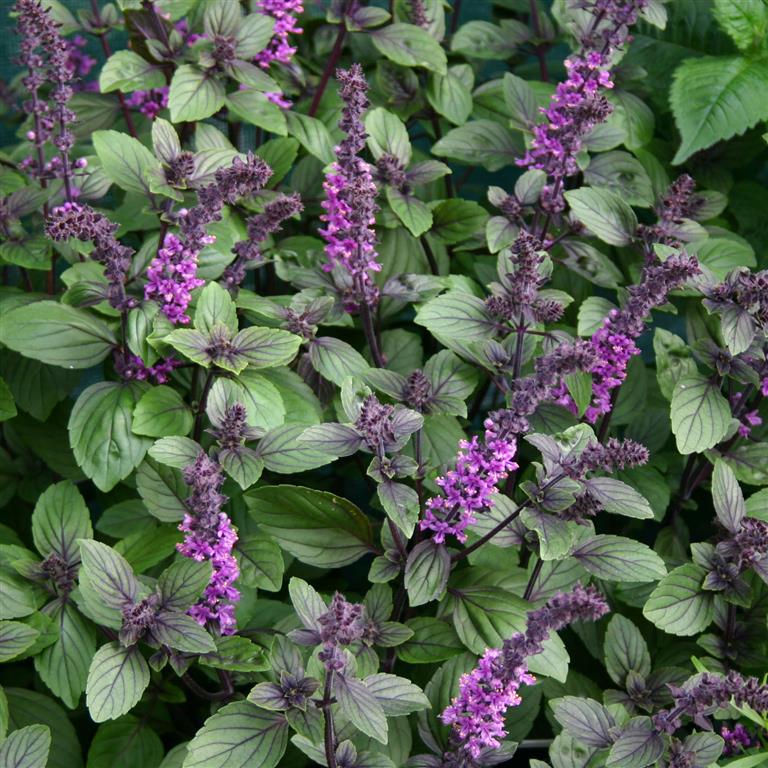Welcome to summer! For me, nothing says summer like fresh herbs from the garden paired with summer veggies like squash and tomatoes. Basil has always stood out to me as a garnish that adds a fresh summer feeling to any dish.
It wasn’t until I started farming that I learned of the world of basil beyond the traditional Genovese or pesto varieties. For savory dishes, teas, and even greenery for flower bouquets – there’s a basil for everything! Here are some of my favorites.
Mrs. Burns Lemon Basil
This acts like a classic basil that’s an easy one to start from seed. Basil, in general, isn’t too picky – as long as you’ve done your work to prep your soil, you can sow basil in late spring, tuck it into the ground a month or 6 weeks later, and wait for it to be big enough to start picking leaves off, or until there are leafy stems about 4” or longer that you can cut, bundle, and hang to dry. If your main use for these herbs is tea, continue to pinch the stems off and dry them throughout the season so that they don’t burst into flower.
These beauties came into my life as I began growing flowers for bouquets. I can’t recommend it highly enough for use as greenery in mixed bouquets. The scent is intoxicating and they are a gorgeous addition to the garden. They demand similar growing practices as pesto basil – but in the case of growing for bouquets, you don’t want to pinch the tips – you want to let them flower! Wait until the stems are quite stiff and the flowers are fairly well developed to pick long stems for bouquets. They wilt quickly and easily, so you’ll want to cut first thing in the morning before it’s hot out.
Tulsi Basil
Many people out there have tried tulsi tea out of a box, but don’t associate it with the beautiful, easy-to-grow plant it comes from. Tulsi or ‘Holy’ Basil plays an important role in Ayurvedic medicine, in Hinduism, and, often, in Thai cooking. It is believed that the plant helps sharpen memory along with a whole range of other health benefits. It’s a winner and a staple for tea garden herbs.
Tulsi basil grows as an annual in our climate just as easily as pesto basil does. Plant it in a sunny spot in the garden from May – July, and give it plenty of water. Harvest short stems of leaves as they come on and hang to dry. Much like lemon verbena, Tulsi basil is delicious as a simple tea with hot water and honey.
African Blue Basil
The more rare African Blue Basil is a special variety in the cut flower world. It’s a tender perennial and can grow into a woody, 5-foot-tall shrub in the right conditions. In my field, which sits in a low spot and gets frequent winter frosts, it might not overwinter without some serious mulching and covering in plastic. I’ll be trying that this winter, and let you know how it goes.
Unlike the other basils above, African Blue is only grown from cuttings, is a hybrid from two different parent basils, and produces sterile flowers. It’s one of the most attractive basils out there, though, and is a huge draw for all sorts of bees and beneficial insects. It has a bit of a strong taste, too, but is absolutely edible.
What are your favorite basils to grow in the garden?


 Family
Family

